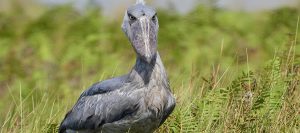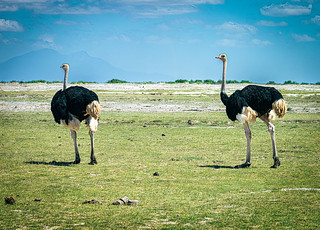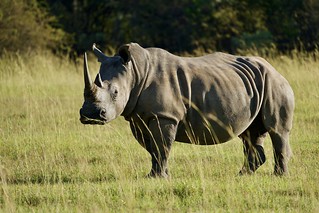Shoe bills are the endemic of Africa continent particularly in east and central Africa in countries like Uganda, Rwanda, DR Congo, Tanzania and Zambia. They usually live in the swampy areas near freshwater lakes like Lake Victoria. Most of this swampy area where shoe bills are found are remotely located and will requires you to reserve enough to reach those places where you can encounter there rare but unique birds in their natural habitats.
However, if you are planning to visit Uganda on you your vacation safari adventure, you will be lucky enough to encounter the shoe bill without going through the hassle of moving long distance at Mabamba swamps. Mabamba swamps is located just 25 kilometers away from Entebbe international airport which will be a 15-minute drive to the swamps. With this advantageous strategic location of shoe bill Mabamba swamp, the place is aa must visit on your Uganda adventure
What you need to know about shoe bills
Shoebill is the one of the rarest birds in the world and because of its uniqueness revelers all over the world flocks the countries of east and central Africa to have a once in lifetime opportunity to encounter these unique birds in their natural habitats. Here is what you must know before physically encountering the shoe bill at Mabamba swamps
Life expectancy of shoe bill
The life expectancy of the shoe bill is believed to be between 30 to 36 years in their natural habitats. For the shoe bills in the zoo can live longer due to the adequate medical attention afforded to them in those artificial environment
breading of shoebill
The shoe bill lay between one and three eggs but mostly two eggs are laid by the shoe bill. Before egg laying, the shoe bill will construct its nest on the floating vegetation with the diameter of 1 to 2 meters. The reason why the nests are constructed on the floating vegetation is to protect the eggs against the predators which would wish to feed on these eggs. During the reproduction period, the shoe bill tends to be very territorial and protective of their area. The incubation period lasts for 30 days and hatching unlike in other birds is done by the mother as the young one bill is unable to crack the egg.
The process of hatching last between three to four days. Normally only one newborn survives because of food competition. The strongest newborn survives because of food competition. Usually, the father looks for food after the newborn while the mother plays the feeding role and protection role of the newborn against the predator
The development of the newborn is a slow process compared to other bird. It will take up to 120 days for the newborn to fully develop the feather and start flying and by 150 days the young one will become completely independent of the mother and father
the show bill will lay eggs once in three to five years and that explain the low population of the shoebill species.
Shoe bill behaviors
Shoebill never live in group; they live an independent life. Unless there is a food scarcity, you will rarely find shoebill get closer to each other. Within their territory, a female and male shoebill will live on opposite sides of their territories.
Shoebills are also not migrative birds as long as the conditions are still conducive for them. However, they tend to preform a seasoned movements between their feeding area and nesting area within their range. Furthermore, shoebill does not build nests for sleeping, they only construct nests for the reproduction purpose. Other than that, they live in open place during the night. Also note that shoebill are doctoral animals, and they do their hunting during day.
Food habitat
Shoebills majorly leave in the aquatic environment, and this is so because they feed on aquatic life like lungfish, bichirs, catfish, tilapia and watersnakes. On occasion, they will also consume frogs, monitor lizards, turtles, young crocodiles, mollusks and carrion. The best hunting area is the shallow water in swampy areas. If it is a deep water, then there must be a floating vegetation on the water to support the predator prey interaction
Shoebill do their hunting by staying standstill in one position or moving slowly toward its prey before making a sudden movement to catch their prey. They usually hunt early in the morning, and this constitute to the time to encounter the shoebill in their natural habitats
Where else to see shoebill in Uganda and Rwanda?
Other than Mabamba swamps, shoebill can also be found at Murchison falls national park closely along the bank of Nile River around the delta belt. Other places include southern end of lake Edward on your safari at queen Elizabeth national park, Rugongo swamp in Zziwa rhino sanctuary, Lake Mbulo national park and Semliki national park in Uganda. In case of Rwanda, shoebill stork can be found at Akagera national park in the northeastern part of Rwanda.
Uganda birding experience safari package
10 Day Uganda Birding Vacation safari

Uganda is a very ideal bird watching safari destination with over 1000 different bird species that can be watched by all travelers interested in birding tours in Uganda. Take on the 10 Days Bird watching Safari to enjoy the best bird watching safari holiday Tours.
| TRIP DETAILS |
| REQUEST INFO |
10 Day Uganda Rwanda primate adventure

The 10 Days Uganda Rwanda Gorilla and Wildlife Tour starts and ends in Kampala. It will take you to Uganda’s un-spoilt wildlife destinations to experience Nature at its best. Explore all the best Uganda has to offer to tourists in the tropic Africa. Major tour activities in this tour include game drives in hunt for some of the “Big 5”
| TRIP DETAILS |
| REQUEST INFO |
3 Day birding safari in Murchison

The 3 Days Birding Tour takes you to Murchison Falls National park is Uganda’s biggest park, with about 450 bird species. The magnificent Murchison Falls offers wonderful scenery, characterized by hundreds of hippos and huge crocodiles. Usually, elephants and Buffaloes are seen basking along the shores.
| TRIP DETAILS |
| REQUEST INFO |

